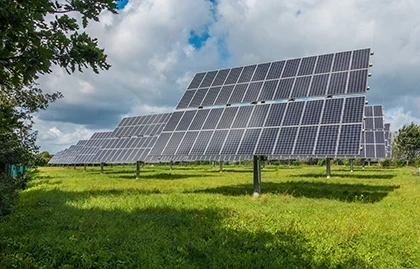Retailers Adapt Strategies to Changing Weather and Climate

As climate change increasingly impacts weather patterns across the globe, retailers are adjusting their strategies to respond to more frequent and extreme weather events. From extreme heatwaves to unpredictable storms, shifts in seasonal patterns are presenting both challenges and opportunities for companies. Retailers are now looking to weather data to better forecast demand, optimize supply chains, and align their marketing and inventory strategies with the changing climate.
Climate Change Drives New Retail Strategies
In recent years, climate-related disruptions have reshaped the retail landscape. Retailers that once relied on predictable weather patterns are now faced with the reality of a world where temperature extremes, flooding, and other weather events are becoming more common. In response, many companies are turning to innovative solutions to adapt to these changing conditions.
One of the most significant adjustments is the way that retailers approach inventory and product offerings. Seasonal products, traditionally tied to specific times of the year, are now being reassessed based on weather forecasts and longer-term climate predictions. For example, clothing companies are starting to shift the timing of their collections, launching summer apparel during early warm spells or incorporating more versatile items that can work across multiple seasons. Similarly, retailers selling outdoor goods like air conditioners or heating equipment are now using weather prediction models to time promotions and stock adjustments for when extreme weather events are expected to hit.
Companies are also investing in advanced data analytics and weather forecasting tools to better predict demand fluctuations. By using real-time weather data, retailers can make quicker, more accurate decisions about restocking and promotions, ensuring they are better prepared for shifts in consumer behavior caused by weather patterns. For instance, if an unseasonably hot summer is forecast, clothing brands can pivot to focus on more summer-oriented styles earlier than planned.
Weather Data Fuels Consumer Insights
Retailers are increasingly using sophisticated weather-driven algorithms to predict which products will be in demand based on localized weather events. This allows them to tailor promotions and marketing campaigns to reflect current or forecasted weather conditions. For instance, fashion retailers may use weather patterns to push sales of jackets or scarves when a cold snap is expected, or promote swimwear when an unusually hot week is on the horizon.
Similarly, grocery stores and home improvement retailers are adjusting their strategies based on climate and weather forecasts. For example, grocers might ramp up stocking of certain food items ahead of severe storms or extreme cold, while home improvement retailers can target customers with heating products or storm supplies during periods of anticipated severe weather.
This hyper-localized, weather-dependent marketing is not only a response to climate change but also a way for retailers to better engage with customers. By offering products and promotions tailored to local weather conditions, companies can increase their relevance and improve their sales performance, even during seasons traditionally associated with slower business.
Impact on Supply Chains and Logistics
One of the most pressing issues for retailers is how to manage supply chains that are increasingly vulnerable to climate-related disruptions. Severe weather events such as hurricanes, floods, and wildfires can cause significant delays and damage to supply chains, leading to stock shortages, transportation disruptions, and delays in getting products to shelves. Retailers are taking proactive steps to mitigate these risks by diversifying their supply sources, creating more resilient logistics networks, and incorporating climate resilience into their long-term planning.
For example, some companies are looking to nearshoring or reshoring manufacturing operations to mitigate the risks posed by long supply chains that depend on global transport routes. By sourcing products closer to home, retailers can reduce the impact of supply chain delays caused by extreme weather events or other disruptions.
Additionally, retailers are increasingly using technology to track and monitor their supply chains in real time. This allows them to identify potential bottlenecks caused by weather disruptions and take swift action to reroute shipments or adjust delivery schedules. Advanced data tools also help retailers anticipate demand surges in response to weather events, ensuring that they can stock products ahead of time, instead of scrambling to replenish inventory once a crisis hits.
A Shift Toward Sustainable Practices
In addition to managing the risks associated with climate change, many retailers are embracing sustainability as part of their broader response. With climate change a growing concern for consumers, companies are recognizing the importance of aligning their products, services, and operations with sustainable practices. This includes efforts to reduce carbon footprints, use sustainable materials, and adopt energy-efficient technologies across the supply chain.
For instance, several major retailers are committing to net-zero emissions targets, pledging to reduce the environmental impact of their operations. This could involve switching to renewable energy sources for their stores, warehouses, and distribution centers, as well as optimizing packaging to minimize waste. Retailers are also investing in sustainable sourcing practices, ensuring that the products they sell—whether clothing, food, or other goods—are produced with minimal environmental impact.
Retailers are increasingly recognizing that climate change and extreme weather events are no longer distant concerns but present-day realities that require proactive strategies. By leveraging weather data, adapting supply chains, and aligning their offerings with consumers' needs during changing weather patterns, retailers are finding new ways to stay competitive and resilient. In doing so, they are not only mitigating risks but also positioning themselves for long-term success in an era where climate change is reshaping consumer behavior and market dynamics. As the retail industry continues to adapt to this evolving landscape, the ability to respond quickly to weather-related challenges will be critical in maintaining customer loyalty and driving growth.









